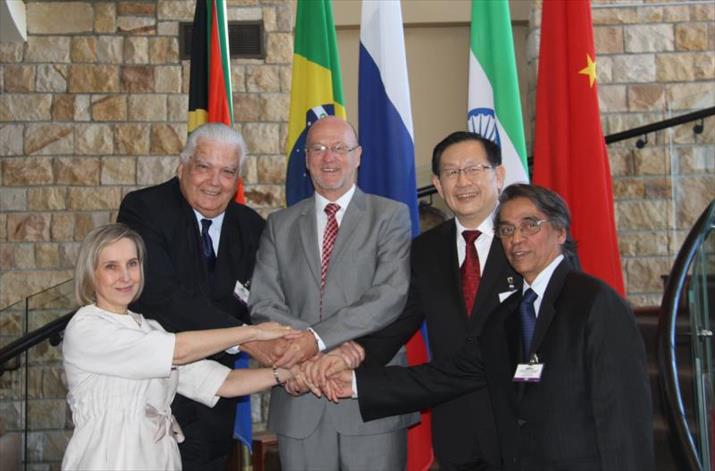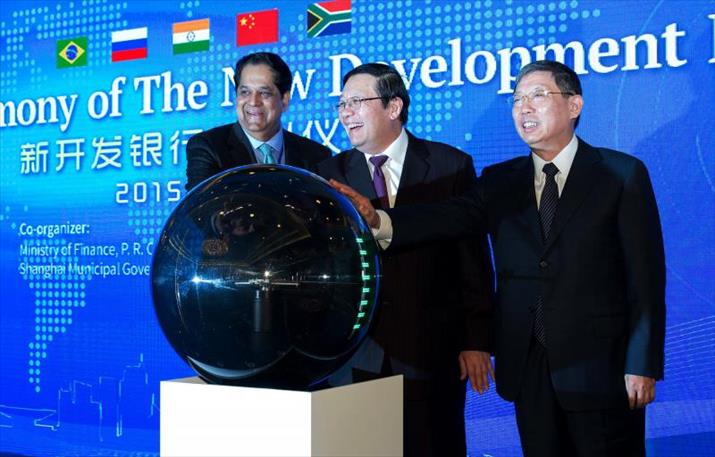|
||||||||||
| Home Nation World Business Opinion Lifestyle ChinAfrica Multimedia Columnists Documents Special Reports |
|
||||||||||
| Home Nation World Business Opinion Lifestyle ChinAfrica Multimedia Columnists Documents Special Reports |
| Current Cover Story |
| BRICS Still Relevant |
| Despite global circumstances BRICS remain economically resilient |
| By Han Liqun VOL. 8 October 2016 ·2016-09-27 |

Along with the recent economic contraction in some BRICS countries - namely Brazil, Russia, India, China and South Africa, the argument that the association of large emerging economies is faltering is pervasive again.
In the current climate of a global economic fragility, the BRICS have encountered many difficulties in development. But, the rhetoric that the BRICS are declining has overlooked favorable factors for the long-term growth of these countries and tried to play down their role in global affairs on the mere basis of their economic slowdown.
At the same time, economic growth is not the only foundation for cooperation between the BRICS countries. In an ever-evolving world, the rise of emerging economies is a historical trend that will maintain significance. Developed nations also need the vast market of emerging economies, though they may, at the same time, want to prevent a rival political group of the latter from coming into being.
Potential remains
Currently, the BRICS countries have four main challenges to meet with regard to development. However, these challenges have not been resolved and some may, in turn, enhance cooperation within the group.
It is undeniable that the BRICS countries are losing some comparative advantages in terms of economic growth. At present, many emerging economies, the BRICS countries included, are encountering challenges such as the rising costs of labor, land, resources and capital, while the return on investment is declining remarkably.
For instance, labor costs in China were merely 33 percent of Mexico's in 1996, but the ratio soared to 115 percent in 2015. From 2012 to 2015, the Morgan Stanley Capital International's BRIC index, which measures the combined equity market performance in Brazil, Russia, India, and China, was negative for three consecutive years. In the meantime, the annual return on investment in the BRICS countries also declined sharply. There are a variety of causes for the slumping demand for investment. On the one hand, this indicates a return to the normal level after investors have reevaluated the previously exaggerated investment potential of the BRICS. On the other hand, problems including financing difficulties and excess production capacity that worsened following the 2008 financial crisis have further curbed investors' enthusiasm.
External competition has also grown increasingly fierce for the BRICS countries. Developed countries are attempting to regain the dominance of the world economy through reindustrialization, which may reshape the globalization process. Take the United States as an example. The contracted growth in average real wages and widespread automation have further boosted productivity in the country and reduced its production costs, pushing the return of manufacturing jobs. Additionally, large U.S. multinational corporations are constantly innovating their competition strategies and entering emerging industries to maintain their global leadership. Furthermore, other emerging economies have grown rapidly in recent years. Mexico, for instance, is rising to become the world's new factory, taking advantage of its large working-age population, favorable location next to the huge U.S. market, as well as its membership in the North America Free Trade Agreement.

To cope with the global financial crisis, the BRICS countries have without exception adopted powerful stimulus measures, helping them to survive the toughest time of the disaster. However, these measures have, to some extent, stifled enterprises' operation, harming long-term economic development. For example, Brazil had lowered its benchmark lending rate 16 months in a row, which dealt a heavy blow to Petrobras, a semi-public petroleum company accounting for 10 percent of the country's economy.
Before the global financial crisis, national security spending of the BRICS countries was comparably low since the situation in their vicinity was relatively stable. However, the post-crisis security environment around the world has worsened remarkably due to intertwined traditional and non-traditional threats as well as the combined influence of state and non-state actors (such as Al Qaeda and the "Islamic State" extremist group) on global affairs. The escalation of strategic competition between major powers has not only complicated some hotspot issues but also threatened the stability of the existing international security system. If this situation remains unchanged, the global economic recovery will become more difficult. For example, Russia has been involved in wars in Ukraine and Syria since the end of 2013, ballooning military expenditure to $66.4 billion in 2015, the highest in the past decade.
Despite all that, future growth potential in the BRICS countries is still strong. There have been efforts to adjust their economic structures to create new drivers of growth. All of them are seeking to forge new competitive edges in high-value-added fields through increasing research and development.
More than half of Chinese enterprises reportedly have made innovation their top priority, compared to less than 30 percent of U.S. companies doing so. Currently, Chinese telecommunications equipment makers have already gained ground over their Western counterparts, while India-made generic medicines have cornered a large share of the global market. Brazil has become a dominant world player in protein products and Russian businesses' overseas investment is also constantly rising. These new advantages in competition as well as the improved caliber of the labor force will help BRICS to rebound from the crisis.
Also, many international organizations and research institutions are optimistic about the growth prospects of the BRICS. While the International Monetary Fund (IMF) lowered its outlook for global economic growth by 0.1 percentage point in the April edition of the World Economic Outlook report, it raised its China growth forecast by 0.1 percentage point, underlining its approval of the Chinese Government's recent pro-growth policies. The IMF also predicted that Russia and Brazil may return to growth in the next few years and that the Indian economy can maintain a relatively rapid expansion over a long period.
Balancing power
The international order has undergone a profound evolution since the outbreak of the global financial crisis. The economic status and strength of emerging economies, including the BRICS, has risen rapidly. Emerging economies have become an important force in improving the international governance system and promoting the building of a fairer and more reasonable world order. Whether the BRICS can maintain high-speed growth will not be a decisive factor in their participation in international governance.
Since the establishment of the BRICS mechanism, the five countries have set up a comprehensive system for cooperation on the basis of equal consultation. Their cooperation encompasses both political and economic arenas. Together, they have set up the New Development Bank (NDB) and the BRICS Contingent Reserve Arrangement. They have also coordinated positions and actions on major international affairs. At present, the NDB has already begun to fund projects in the BRICS countries, meaning that cooperation within the group has become institutionalized. The comprehensive cooperation among the BRICS has helped consolidate mutual understanding and support among people of the five countries and promoted integration.
The challenges currently facing the BRICS are really two sides of the same coin. The obstacles to economic development may turn out to be driving forces for political cooperation. For instance, as the international security environment worsens and encumbers global economic recovery, emerging economies, including the BRICS, share a common interest in reversing this unfavorable trend.
The BRICS countries vary in terms of different levels. The global economic downturn further amplifies these differences and simultaneously provides new cooperation potential. For instance, the status quo of development in India is quite similar to that in China in the late 1990s. Thus, many Indian officials and scholars advocate to use China's development experience as a learning opportunity.
In fact, there have always been naysayers critical of the BRICS and China, even before the global financial crisis. However, the influence of the BRICS is continually growing. In the past several years, the five BRICS countries have contributed more than 50 percent of global growth. Currently, they combine to account for more than 20 percent of global GDP, and the proportion is expected to rise to about 25 percent by 2020. The upcoming BRICS Summit, held in India in October, is likely to deliver more fruitful benefits for the future development of this important mechanism of cooperation.
(The author is a research fellow with the China Institutes of Contemporary International Relations)
| About Us | Contact Us | Advertise with Us | Subscribe |
| Copyright Beijing Review All rights reserved 京ICP备08005356号-5 京公网安备110102005860号 |